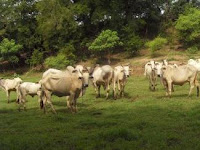Application of Biogas Technology in West Nusa Tenggara, Indonesia - The spirit of the government to streamline the budget by reducing subsidies gradually lead to the development of alternative fuel and renewable energy sectors. Biogas technology is a very old technology that was developed and used in various countries since decades ago. The technology is easily applied and operated even in different parts of the world, from rurals of Africa with a very-simple technique, to industrial scale in country like Germany. The biogas technology is very suitable developed in West Nusa Tenggara (NTB), as the NTB is one of the largest cattle-producing center in Indonesia.
Besides to the potential of biogas application that is feasible (easily constructed), biogas production also provide economic value-added for society as a ready means of energy providers. Based on the calculation of the utilization of manure from two cattles, the biogas production can reach 1 m3 per day. One metric ton (1 m3) of biogas is equivalent to:
- 60-100 watt light bulb for 6 hours.
- 5-6 hours to cook using gas stoves
- Equivalent to 0.7 liters of gasoline
- Able to produce 1.25 kwh electricity
Biogas is a gaseous mixture of methane (60-70%), CO2 and other gases generated by bacterial methanogenesis found in swamps and ruminants stomachs like cattles and buffaloes.
Biogas formed through three stages: hydrolysis, acidification (acidification), and methanogenesis. In the hydrolysis stage, the molecules of oxidized enzymatically into short molecules. These short-chain molecules is degraded further into organic acids by acetogenic bacteria. Furthermore, organic acids are degraded into methane. The entire gas produced in the third stage of the process is called biogas.
Related posts:


No comments:
Post a Comment